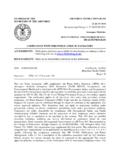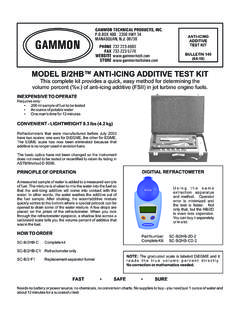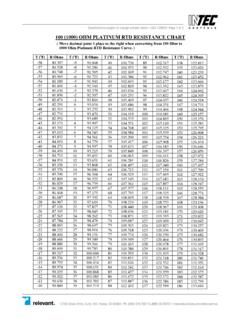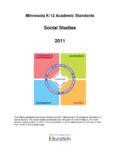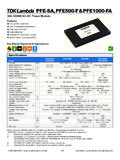Transcription of Food loss assessments: causes and solutions - Kenya
1 food LOSSASSESSMENTS: causes ANDSOLUTIONSCase studiesin small-scale agriculture and sheries subsectorsWorking paperKenyaBananaMaizeMilkFishGlobal Initiative on food loss and Waste Reductioni GLOBAL INITIATIVE ON food loss AND WASTE REDUCTION - SAVE food - food loss Assessments: causes and solutions Case Studies in Small-scale Agriculture and Fisheries Subsectors. Kenya Banana Maize Milk Fish food & AGRICULTURE ORGANIZATION OF THE UNITED NATIONS ROME, 2014 This document is unedited and made available as presented by its authors. The design and implementation of the case studies and their methodology is the responsibility of FAO s Rural Infrastructure and Agro-Industries Division and Fisheries and Aquaculture Policy and Economics Division.
2 The designations employed and the presentation of material in this information product do not imply the expression of any opinion whatsoever on the part of the food and Agriculture Organization of the United Nations (FAO) concerning the legal or development status of any country, territory, city or area or of its authorities, or concerning the delimitation of its frontiers or boundaries. The mention of specific companies or products of manufacturers, whether or not these have been patented, does not imply that these have been endorsed or recommended by FAO in preference to others of a similar nature that are not mentioned.
3 The views expressed in this information product are those of the author(s) and do not necessarily reflect the views or policies of FAO. FAO, 2014 FAO encourages the use, reproduction and dissemination of material in this information product. Except where otherwise indicated, material may be copied, downloaded and printed for private study, research and teaching purposes, or for use in non-commercial products or services, provided that appropriate acknowledgement of FAO as the source and copyright holder is given and that FAO s endorsement of users views, products or services is not implied in any way. All requests for translation and adaptation rights, and for resale and other commercial use rights should be made via or addressed to FAO information products are available on the FAO website ( ) and can be purchased through 1 TABLE OF CONTENTS 0.
4 INTRODUCTION 3 Implementation methodology of the field studies. 4 I. Banana Subsector 5 1. Introduction and Background 6 2. Supply Chain Situation analysis 10 3. food Losses Study findings and results 21 4. food loss Reduction Strategy Conclusions and recommendations 25 Annexes 28 II. Maize Subsector 31 1. Introduction and Background 32 2. Supply Chain Situation analysis 35 3. food Losses Study findings and results 42 4. food loss Reduction Strategy Conclusions and recommendations 48 Annexes 51 III. Milk Subsector 53 1. Introduction and Background 54 2. Supply Chain Situation analysis 60 3. food Losses Study findings and results 65 4.
5 food loss Reduction Strategy Conclusions and recommendations 68 Annexes 69 IV. Fish Subsector 71 1. Introduction and Background 72 2. Supply Chain Situation analysis 75 3. food Losses Study findings and results 78 4. food loss Reduction Strategy Conclusions and recommendations 82 Annexes 85 3 INTRODUCTION food losses refer to the decrease in edible food mass throughout the different segments of the food supply chains production, postharvest handling, agro-processing, distribution (wholesale and re-tail), consumption. food losses and their prevention have an impact on the environment, food secu-rity for poor people, food quality and safety, and economic development.
6 The exact causes of food losses vary throughout the world and are very much dependent on the specific conditions and local situation in a given country. During the recent decades numerous studies have been undertaken to assess the quantities of food losses and food waste in many countries of the world. Most of these studies were conducted at na-tional level, and based on literature review, statistical data, and stakeholder interviews. The research revealed the knowledge gap: we have quantitative estimations of food losses, we know the causes of food losses, and we know that food loss reduction will be of great benefit to all actors in the food production and supply chains, to food security for poor people, and to the environment.
7 However, we don t know yet which causes of food losses are the most important, what is the impact of solutions and which solutions are viable and cost-effective, in economic, environmental and food security terms. Meaning: the solution to food loss should not be more expensive than the food loss itself, should not place a higher burden on the environment and greenhouse gas emission, should make more food available to the people that need it most, and should be socially and culturally ac-ceptable. Therefore the food supply chain case studies have been designed, for the most important food sub-sectors in developing countries.
8 In these case studies primary and empirical data will be generated for the different causes of food losses, and solutions for food losses will be analysed for their feasi-bility. A case study is just a one-moment recording of what is happening in a specific food supply chain in a specific season; next season and in a different location the situation can be very different again. Therefore it is important that many case studies in many different locations can be undertaken, so that the multitude of study results provide significant trends and solutions . Further, the strategy aims at using the results of the case studies to target opportunities for investment programmes and inter-ventions, during which formulation a wider geographical scope and the seasonality will be ana-lysed.
9 The objective of this study is the identification and quantification of the main causes of food losses in the selected food supply chains, and the analysis of the measures to re-duce food losses on their technical and economic feasibility, social acceptability and environmental impact, leading to concrete proposals to implement a food loss reduction programme. 4 Implementation methodology1 of the field studies. 1. Selection of countries and subsectors. Countries and subsectors are based on existing and on-going programmes to work with, and col-laboration with partners in the field. Subsectors are chosen from the important food commodities in the country: cereals, roots & tubers, fruits & vegetables, oilseeds & pulses, animal products (meat, milk, eggs), fish & seafood.
10 2. Identification of consultants. The field work will be done by a team of two or three national consultants: one subsector spe-cialist, who could be an actor in the food supply chain, one agricultural economist, and one rural sociologist. 3. Selection of food Supply Chains. - based on smallholder producers; - significant scale of food production; - preferably including agro-processing and urban market; - if possible, included in an on-going support programme for the subsector. 4. Uniform Methodology. The methodology of the case studies need to be uniform for all countries, so that the results are comparable and extrapolation is possible.











